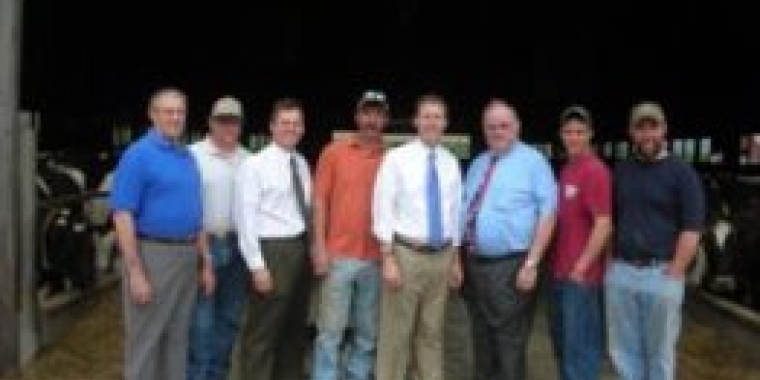
A Good Year For Agriculture In Albany

Despite all the talk of unfinished business in Albany, there is one thing that is certain about the 2007 legislative session: when it comes to issues related to Agriculture, it has been an especially productive year.
The most notable accomplishment was the Dairy Assistance Program, which directed $30 million in cash direct to the dairy farmers who were hit hard by unstable milk prices last year. The state reimbursed eligible dairy farmers for milk produced in 2006, up to 4.8 million pounds. Based on this cap and the expected rate of payment, the maximum amount a producer could receive was estimated to be approximately $16,000, with the average dairy farm receiving about $7,000.
The Dairy Assistance Program not only helped dairy farmers, but it supplied needed aid to struggling rural areas. This one-time $30 million fund immediately spread through the rural economy, balancing the accounts of everyone from grain farmers to equipment dealers.
This successful program was a direct result of the hearings the Senate and Assembly Agriculture committees held across the state earlier this year to consider solutions to the crisis in the dairy industry. We owe a special thanks to Assemblyman Bill Magee, for being such a strong advocate for dairy farmers in the Assembly. The Department of Agriculture and Markets, and Commissioner Patrick Hooker, should also be thanked for their tireless efforts making sure the funds were distributed promptly.
In addition to the Dairy Assistance Program, this year’s session included passage of several important agriculture-related bills. For example, the Legislature passed legislation to reduce assessment of farmland. Earlier this year, I heard from several farmers who were facing more than a 30% increase in their assessments due to a problem with how farm property was assessed. This bill addressed that issue by making sure the base agricultural assessment values will not exceed ten percent of the assessment value of the proceeding year.
The Legislature also adopted a measure that will exempt agricultural buildings from new stringent building codes that were adopted to crack down on nonresidential buildings. As we all know, hay barns are different from department stores and should not be held to the same standard. I heard from many farmers who were concerned about the new codes, and I am pleased to report the passage of this exemption.
There were many more agriculture related bills that passed both the Senate and the Assembly and await the Governor’s signature, including an effort to support Farmers' Market Promotion, a study to look into the impact of hauling costs on dairy farmers, and legislation to begin accounting for bee populations that will enable prompt response to ongoing threats to hives.
And finally, thanks to the renewed focus on New York Agriculture, several efforts are under way to move products to large consumer markets. This year’s state budget included funds for the creation of a New York products wholesale market in New York City. As part of this effort, I hosted a roundtable discussion earlier this summer in Albany to discuss expanding markets for New York products. Farmers, industry leaders and government experts attended the discussion, and shared ideas about how to improve markets for our products.
Like I said, it has been a good year for agriculture in Albany, and as ranking member of the Agriculture Committee I look forward to continuing to work on these issues in the months ahead.